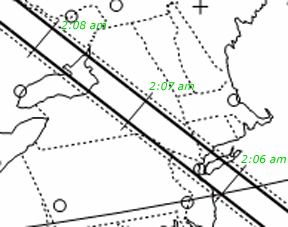Discovered by J. Perrotin MPC designation 163 Minor planet category Main belt (Erigone) Discovered 26 April 1876 Asteroid group Asteroid belt | Discovery date 26 April 1876 Named after Erigone Observation arc 123.56 yr (45131 d) | |
 | ||
Discoverer Henri Joseph Anastase Perrotin Similar Sun, 162 Laurentia, 170 Maria, 135 Hertha, 145 Adeona | ||
Asteroid 163 erigone just after occultation of regulus 3 20 14
163 Erigone is an asteroid from the asteroid belt and the namesake of the Erigone family of asteroids that share similar orbital elements and properties. It was discovered by French astronomer Henri Joseph Perrotin on April 26, 1876, and named after one of the two Erigones in Greek mythology.
Contents
- Asteroid 163 erigone just after occultation of regulus 3 20 14
- Regulus occultation by asteroid 163 erigone march 20 2014
- 2014 occultation of Regulus
- References
Erigone is a relatively large and dark asteroid with an estimated size of 73 km. Based upon its spectrum, it is classified as a C-type asteroid, which indicates that it probably has a carbonaceous composition.
Regulus occultation by asteroid 163 erigone march 20 2014
2014 occultation of Regulus
In the early morning hours of March 20, 2014, Erigone occulted the first-magnitude star Regulus as first predicted by A. Vitagliano in 2004. This would have been a rare case of an occultation of a very bright star visible from a highly populated area, since the shadow path moved across New York state and Ontario, including all five boroughs of New York City. Observers in the shadow path would have seen the star wink out for as long as 14 seconds.
However, heavy clouds and rain blocked the view for most if not all people on the shadow path. The website of the International Occultation Timing Association does not list any successful observations at all.
